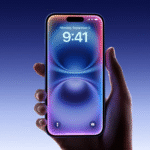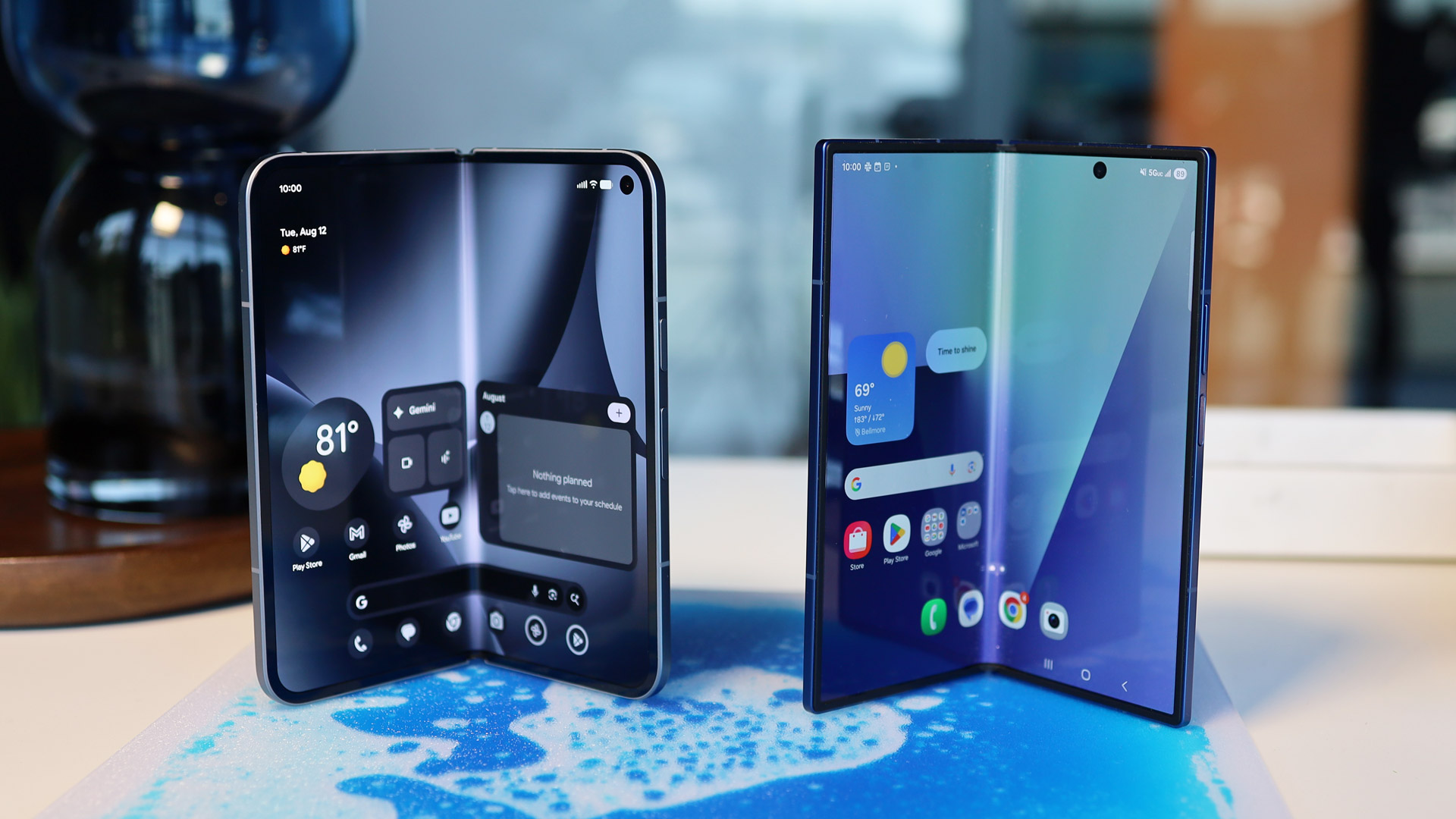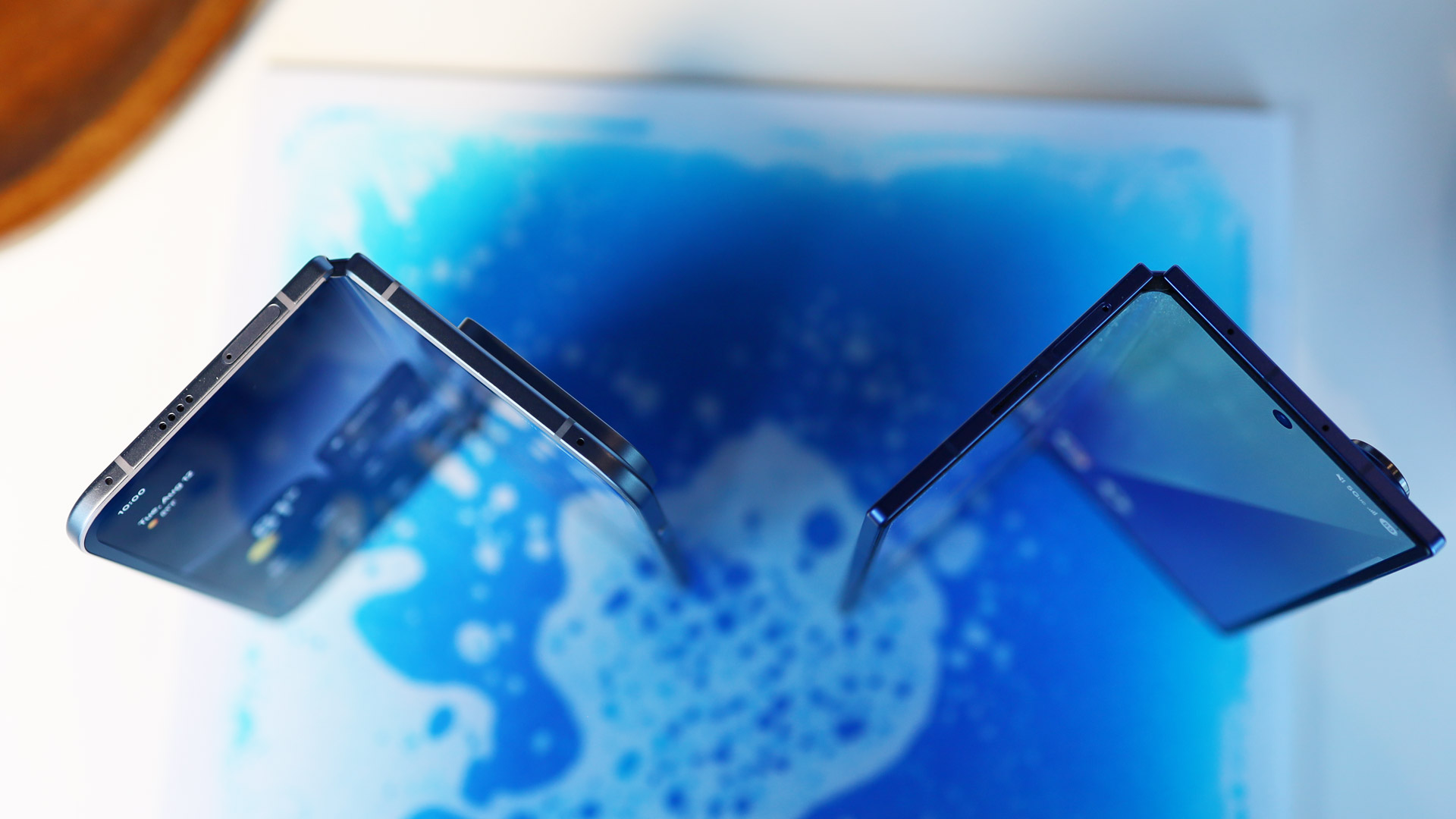Google’s new Pixel 10 Pro Fold is undoubtedly a good phone and an impressive foldable device, but nothing exists in a vacuum.
It arrives just weeks after Samsung unveiled its surprisingly thin and light Samsung Galaxy Z Fold 7, a device that raised the collective bar for all other foldable phones released thereafter.
It’s not that the Galaxy Z Fold 7 is better than the Pixel 10 Pro Fold in every way – in fact, in my hands-on Google Pixel 10 Pro review, I praise Google’s latest foldable for two very particular upgrades (more on these later). But even just from the perspective of dimensions and weight, there’s almost no comparison.
Despite having similarly sized cover and main screens, the two phones look considerably different. This is due in part to the somewhat different aspect ratios of their respective cover screens.
The Pixel 10 Pro Fold is 3 inches wide, while the Galaxy Z Fold 7 is 2.8 inches wide. Despite being narrower, the Galaxy Z Fold 7 has, at 6.5 inches, the bigger screen because it’s taller than the 6.4-inch Pixel 10 Pro Fold.
When opened, the main screens are quite similar, though the Galaxy Z Fold 7’s flexible display has smaller bezels and is considerably squarer.
These display differences, though, are only a smart part of why the Galaxy Fold 7 is immediately a far more appealing device.
Unfolded, the Pixel 10 Pro Fold is 5.2mm thick. This is quite thin, and last year, when I first saw the Pixel 9 Pro Fold, I was justifiably impressed. But that was last year.
This year, the Galaxy Z Fold 7 is just 4.2mm thick. The disparity is even more stark when you fold the Pixel 10 Pro Fold, where it becomes 10.8mm thick compared to the folded Z Fold 7, which is just 8.9mm thick. For the sake of comparison, the Galaxy S25 Ultra is 8.2mm thick.
And while, at 256g, I would not call the Pixel 10 Pro Fold heavy, it’s nowhere near as light as the 215g Galaxy Z Fold 7, which is just a pleasure to hold and pocket. The Google Pixel 10 Pro is nice but not remarkable in this regard.
Cameras are another area where, for the most part, the Galaxy Z Fold 7 moved the needle while Google left its Pixel 10 Pro Fold mostly in park.
Samsung upgraded the main camera sensor on the Z Fold 7 to 200MP, while Google left the main camera array unchanged from the Pixel 9 Pro Fold. The one photographic area where the Pixel 10 Pro fold is the clear winner is on the zoom camera. Yes, it’s unchanged since the last model, but it’s also a 10.8MP, 5x optical zoom. The Z fold is stuck with a 3x optical, 10MP zoom camera.
There are less visible places where the Pixel 10 Pro Fold trumps the Z Fold 7. One is on the remarkable IP68 protection, which means the Pixel 10 Pro Fold can withstand water and dust. The Z Fold 7 isn’t so well sealed; it offers just IP48 protection, and it’s not ready for the beach.
The second somewhat hidden and big change is on the charging side, and it’s actually two parts. The Pixel 10 Pro Fold supports fast Qi2 charging and brings MagSafe-style charging and stand support to Android in the form of Pixelsnap, which lets you magnetically attach chargers, stands, and grips. It’s a shame Samsung didn’t include a similar feature in any of its Galaxy phones, but I suspect that Pixelsnap features will be arriving on all Android phones before long.
The Pixel 10 Pro Fold also handily wins on price, coming in at just $1,799 / £1,749 / $2,699 (unchanged from last year) compared to the $1,999 / £1,799 / AU$2,899 Galaxy Z Fold 7.
So, for those most interested in reducing the strain on their wallet, the Pixel 10 Pro Fold could be the obvious winner. But if it’s a lightweight, ultra-thin design, and a really powerful camera sensor you’re after, the Z Fold 7 wins.
Read the full article here
















